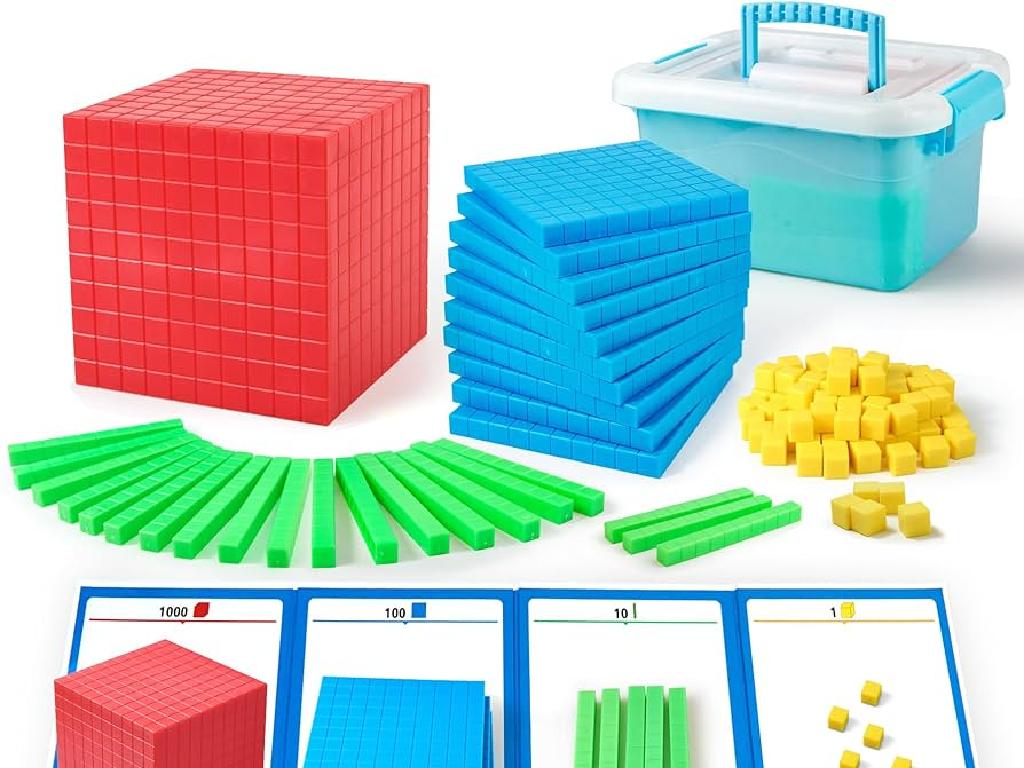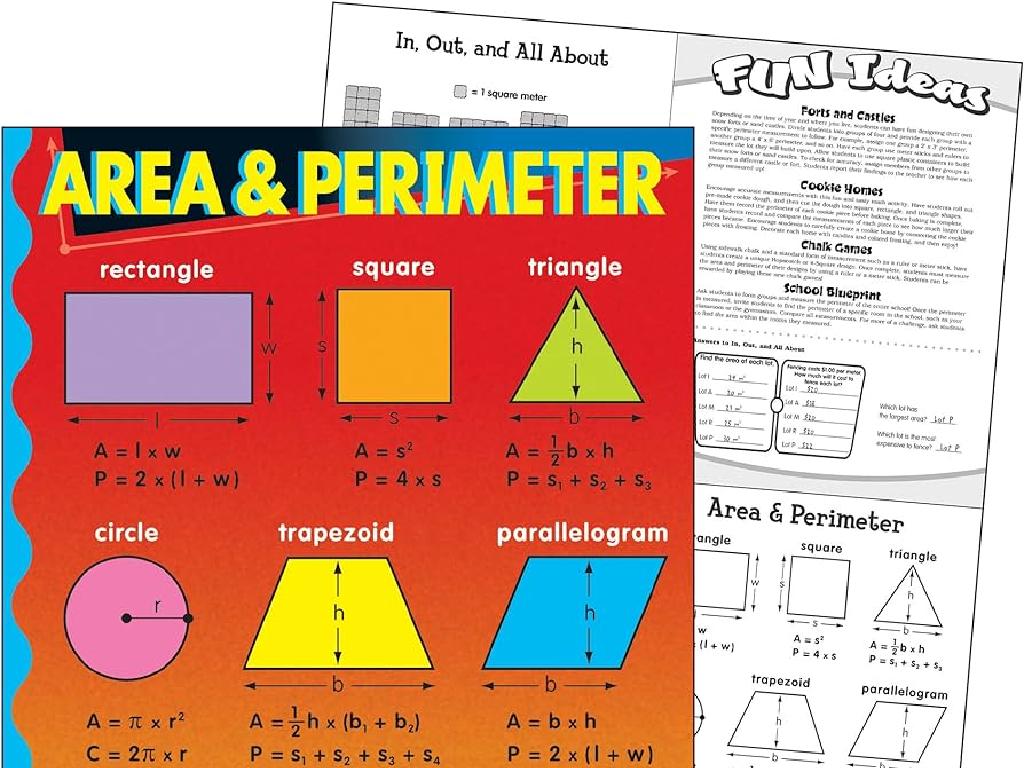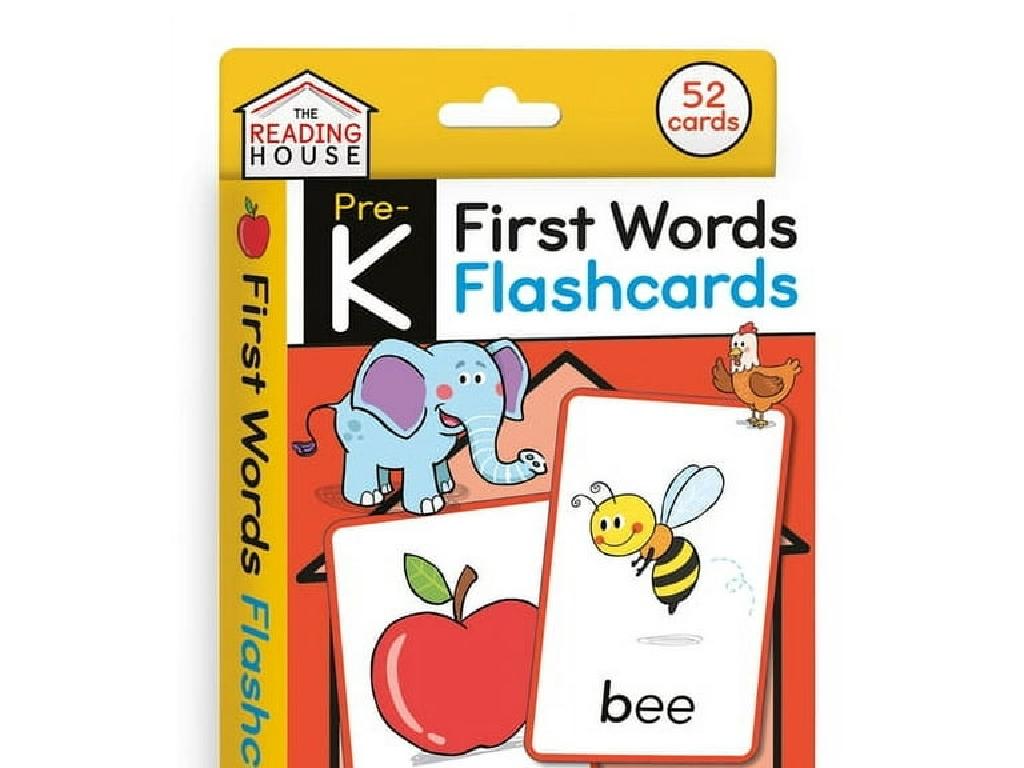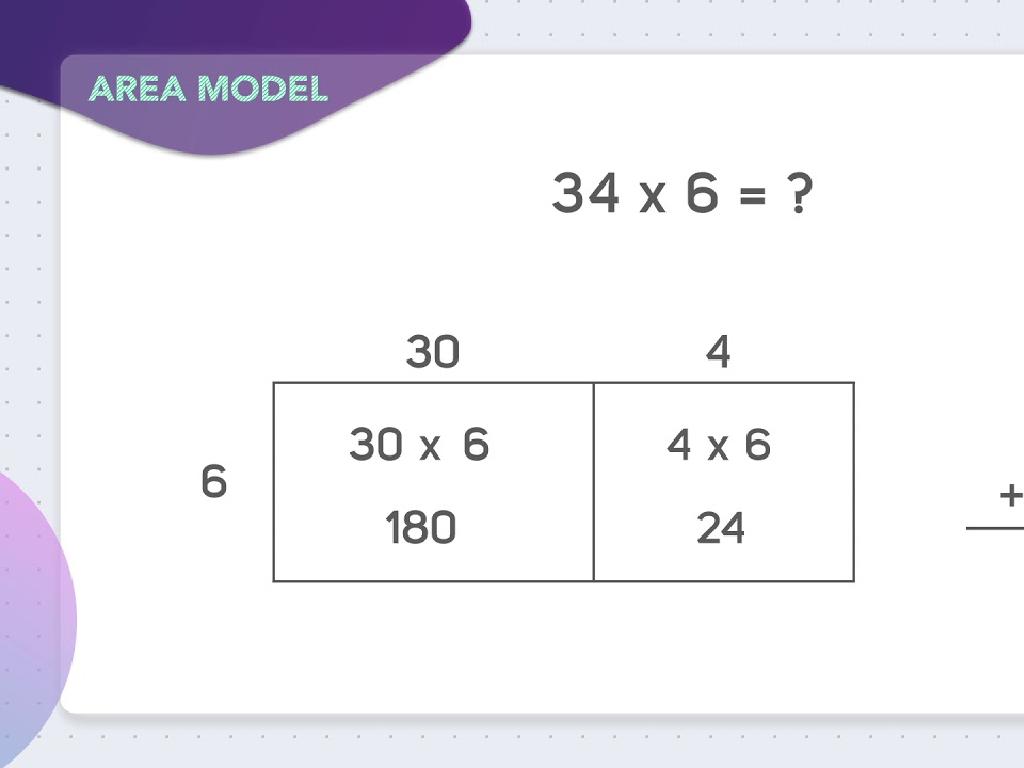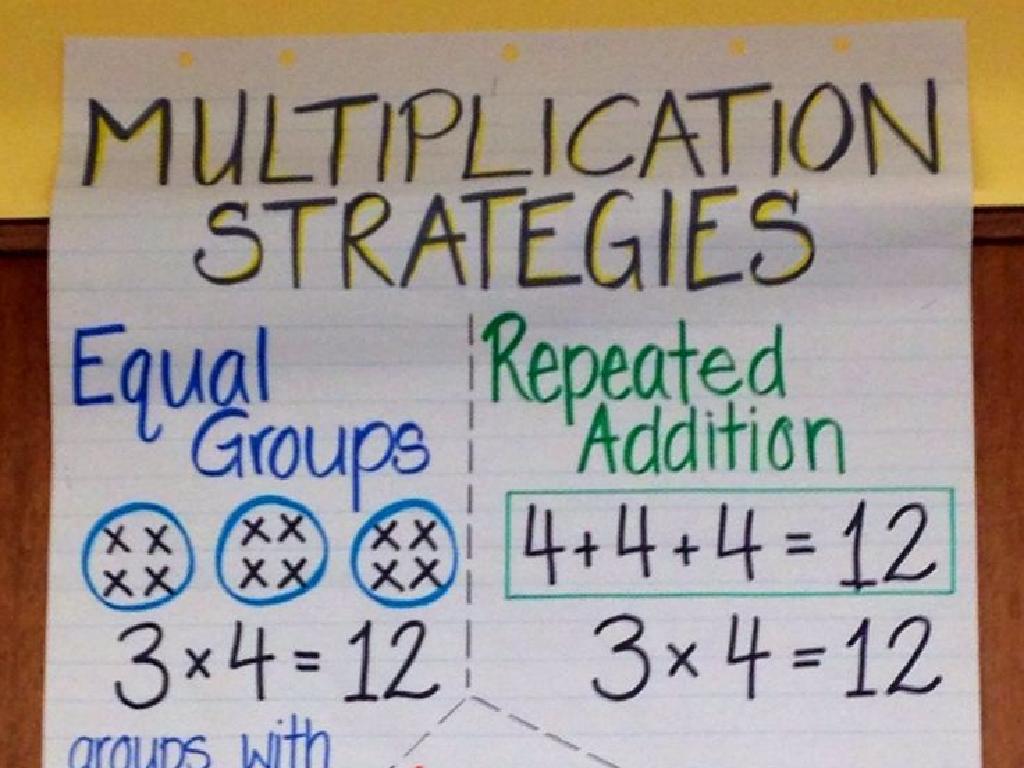Divide By 1-Digit Numbers: Pick The Better Estimate
Subject: Math
Grade: Fourth grade
Topic: Divide By One-Digit Numbers
Please LOG IN to download the presentation. Access is available to registered users only.
View More Content
Introduction to Division: Sharing Equally
– What is division?
– Division is splitting into equal parts or groups.
– Division as equal sharing
– Like sharing 10 apples with 2 friends, so each gets 5 apples.
– Division in daily life
– Dividing pizza slices or splitting chores among siblings.
– Estimating division outcomes
– Use rounding to guess the result before dividing.
|
This slide introduces the concept of division to fourth-grade students by relating it to the idea of sharing equally among a number of people. Begin by explaining division as a method of fairly distributing items or splitting them into equal parts. Provide relatable examples such as sharing food or tasks to make the concept more tangible. Emphasize the importance of estimation in division to make quick and reasonable guesses about the outcome of a division problem. Encourage students to think of times they have used division in their own lives and discuss the importance of equal sharing. This will set the foundation for more complex division problems and help students understand the practical applications of division.
Division Vocabulary: Understanding the Basics
– Dividend: Number being divided
– If we have 20 apples and 4 baskets, 20 is the dividend.
– Divisor: Number that divides
– The divisor is like how many groups you’re sharing with.
– Quotient: Division result
– After dividing, the quotient is how much each group gets.
– Estimation: Picking the best guess
|
This slide introduces the fundamental vocabulary of division, which is essential for understanding how to divide numbers and pick better estimates. The dividend is the total amount you want to divide up, such as a pile of apples. The divisor is the number of groups you are dividing the total into, like the number of baskets you have. The quotient is how much each group receives after the division. Estimation is a skill to approximate the quotient, which helps in making quick and reasonable guesses. Use examples like sharing candies among friends to make these concepts relatable. Encourage students to practice by dividing items in the classroom or at home to reinforce these terms.
Estimation Basics in Division
– Understanding estimates
– An estimate is a close guess of the actual value.
– Purpose of estimating
– Estimating helps us solve division quickly.
– Rounding to nearest ten
– If 68 is divided by 4, round 68 to 70 for easier calculation.
– Simplifying division
– Rounding makes division less complex and faster to compute.
|
This slide introduces the concept of estimation in division, which is a fundamental skill in mathematics. Start by explaining that an estimate is a rough calculation of the amount, number, or value of something. Emphasize that estimation is a useful tool for making division problems easier and quicker to solve, especially when an exact answer isn’t necessary. Teach students how to round numbers to the nearest ten as a strategy to simplify division problems. For example, dividing 68 by 4 can be made easier by rounding 68 to 70. Encourage students to practice rounding and using these estimates to divide. Provide several examples and possibly a quick in-class activity to reinforce the concept.
Estimating with Division
– Use estimates to check division
– Before solving, guess the answer to see if you’re close after!
– How to choose the best estimate
– Compare your estimate with the actual answer to see which is closer
– Examples of estimating quotients
– If 250 ÷ 5, is 50 a good estimate? How about 40 or 60?
– Practice with estimation
– Try estimating 180 ÷ 3. Is 60 or 70 closer to the correct answer?
|
This slide introduces students to the concept of using estimation to check the accuracy of their division work. Emphasize the importance of making a reasonable guess before performing division to have a benchmark for the actual answer. Teach them how to determine which estimate is closer to the actual answer by comparing their guess with the result. Use concrete examples to illustrate how to estimate quotients effectively. Encourage students to practice with different numbers to become comfortable with estimation. This skill will help them not only in math but also in making quick decisions in real-life situations.
Choosing the Better Estimate
– Tips for closer estimates
– Round numbers to nearest ten or hundred
– Solve practice problems
– Use rounded numbers to estimate division
– Discuss estimate comparisons
– Compare estimates to find the most reasonable one
– Understanding estimation accuracy
– Grasp why accurate estimates are important in math
|
This slide aims to teach students how to make better estimates when dividing by one-digit numbers. Start by explaining the importance of rounding numbers to the nearest ten or hundred to make the division easier. Provide practice problems where students can apply rounding to estimate the answers. Encourage discussion on why certain estimates are closer to the actual answer than others, reinforcing the concept of reasonableness in estimates. Emphasize the value of estimation skills in everyday life and in solving more complex math problems. Ensure students understand that while estimates are not exact, they can be very useful for checking the reasonableness of answers.
Let’s Practice Estimating!
– Class activity: Estimate the quotient
– Pair up and solve problems
– Work together to estimate division answers
– Share your estimates
– Compare your results with classmates
– Discuss solutions as a class
– Understand different estimation strategies
|
This slide introduces a class activity focused on estimating quotients. Students will pair up to solve division problems by making reasonable estimates rather than calculating the exact answers. After estimating, they will share their results with the class. This activity is designed to enhance their understanding of division and improve their ability to make quick and accurate estimates. For the teacher: Prepare a set of division problems suitable for fourth graders. Encourage students to think about how close their estimates are to the actual answers and discuss different approaches to estimation. Possible activities could include estimating quotients using rounding, using multiples of 10, or applying the ‘compatible numbers’ strategy.
Review and Reflect: The Role of Estimation in Division
– Importance of estimating
– Estimation helps check if our answers are reasonable.
– Estimation in daily life
– Estimating costs, time, and resources needed for tasks.
– Review of today’s key points
– Summarize the steps to estimate in division problems.
– Practice estimation skills
|
This slide aims to consolidate the students’ understanding of the importance of estimation in division. Estimation is a critical skill that allows students to quickly determine if their division results are in the right ballpark. It’s particularly useful in real-world scenarios such as budgeting, cooking, or planning time for activities. During the lesson review, reiterate the estimation techniques taught, such as rounding numbers before dividing, and encourage students to think of times when they have used or could use estimation outside of the classroom. Conclude with practice problems to reinforce the skill.
Class Activity: Estimation Relay
– Form teams for the relay
– Estimate division problems quickly
– Use rounding to make estimating easier
– Aim for accurate estimates
– Check estimates with actual division
– Winning team has best estimates
|
This activity is designed to make learning division fun and interactive. Divide the class into small groups, and provide each team with a set of division problems. The goal is to estimate the answers as quickly as possible, using rounding to the nearest ten or hundred to simplify the numbers. After estimating, teams should check their answers with actual division to see how close they were. The team with the most accurate estimates will be declared the winner. This will help students understand the concept of estimation and its usefulness in quickly solving division problems. Possible variations of the activity could include timed rounds, bonus points for speed, or a ‘relay race’ where students take turns solving different problems.

